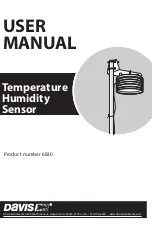
3-15
z
Select the installation location carefully. In the case of poor surface, magnet mounting may not be
reliable.
z
Put the device at a stable place free from vibrations or shocks. Otherwise, personal injuries or
equipment damage may occur.
z
Avoid installing the device at a high place because personal injuries or equipment damage may
occur in case of a falloff.
z
Avoid frequently moving the desk-mounted device because such movements may damage the
surface coating.
z
Keep the front panel of the device facing downwards and the two sides with ventilation holes
vertical to the ground, if you want to install the device vertically.
z
Pay attention that the weight of external cables should not bring about a falloff, which may result in
personal injuries or equipment damage.
z
Keep floppy disks and magnetic cards away from magnets to avoid erasure of any information.
z
Keep computers and monitors that are easily influenced by magnetic fields away from magnets.
Otherwise, faults may occur to these electronic devices.
z
The power cords may vary with different standards of different countries, so you may need to select
a bail latch as needed.
Connecting the Ground Cable
The correct connection of the protection ground cable of the device is an essential safeguard against
lightning strokes and interference. You must correctly connect the ground cable before using your
device.
The power input end of the device has a noise filter, whose central ground is directly connected with the
chassis, forming the protection ground (PGND) of the chassis. This chassis ground must be securely
earthed so that the induction and creepage currents can be safely discharged to the earth to enhance
the anti-EMI capability of the device. The following describes how to connect the PGND cable in
different situations.
If a grounding strip is available
Attach one end of the yellow-green PGND cable of the device to the grounding screw on the chassis
and the other end to the grounding terminal on the grounding strip and fasten the nut.
















































